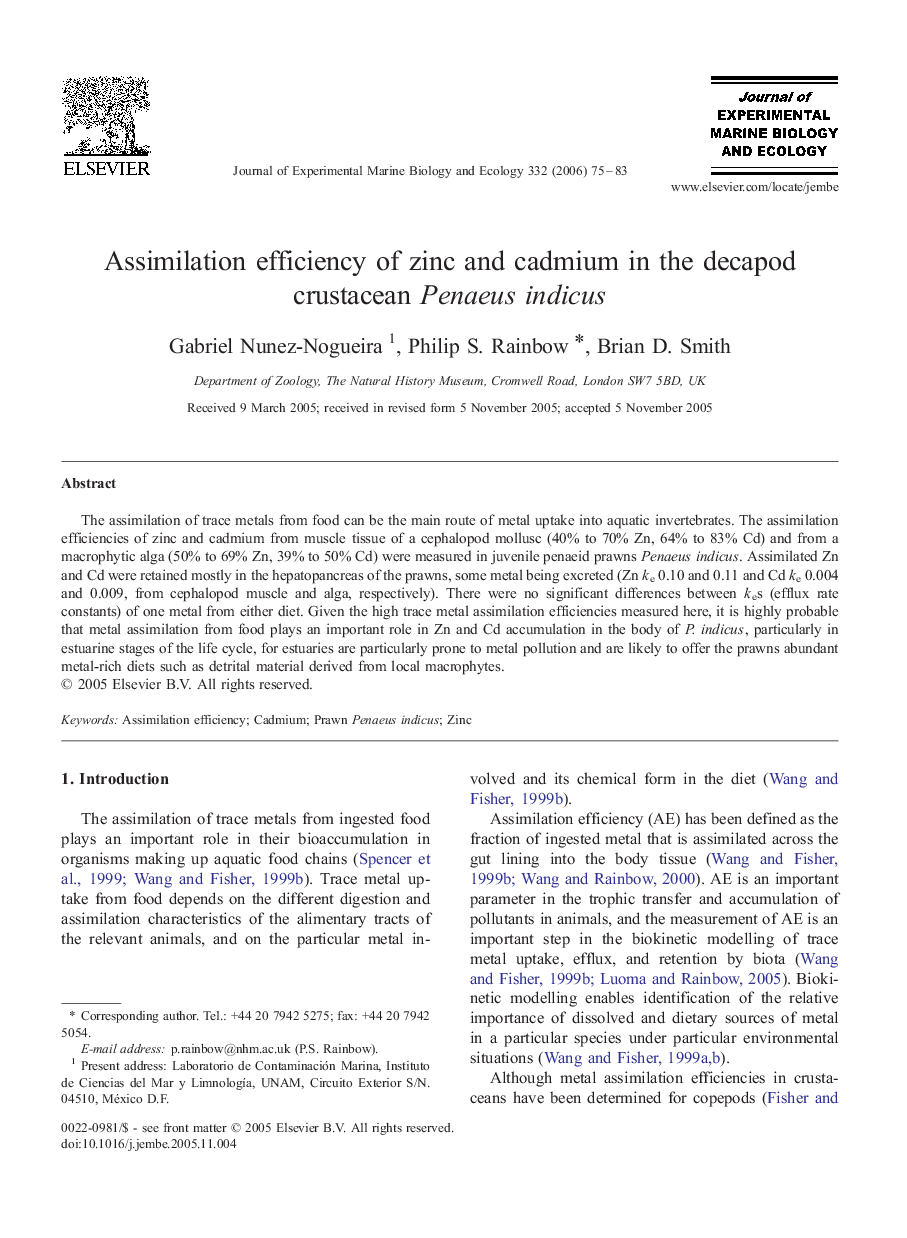| کد مقاله | کد نشریه | سال انتشار | مقاله انگلیسی | نسخه تمام متن |
|---|---|---|---|---|
| 4398083 | 1305924 | 2006 | 9 صفحه PDF | دانلود رایگان |
عنوان انگلیسی مقاله ISI
Assimilation efficiency of zinc and cadmium in the decapod crustacean Penaeus indicus
دانلود مقاله + سفارش ترجمه
دانلود مقاله ISI انگلیسی
رایگان برای ایرانیان
موضوعات مرتبط
علوم زیستی و بیوفناوری
علوم کشاورزی و بیولوژیک
علوم آبزیان
پیش نمایش صفحه اول مقاله

چکیده انگلیسی
The assimilation of trace metals from food can be the main route of metal uptake into aquatic invertebrates. The assimilation efficiencies of zinc and cadmium from muscle tissue of a cephalopod mollusc (40% to 70% Zn, 64% to 83% Cd) and from a macrophytic alga (50% to 69% Zn, 39% to 50% Cd) were measured in juvenile penaeid prawns Penaeus indicus. Assimilated Zn and Cd were retained mostly in the hepatopancreas of the prawns, some metal being excreted (Zn ke 0.10 and 0.11 and Cd ke 0.004 and 0.009, from cephalopod muscle and alga, respectively). There were no significant differences between kes (efflux rate constants) of one metal from either diet. Given the high trace metal assimilation efficiencies measured here, it is highly probable that metal assimilation from food plays an important role in Zn and Cd accumulation in the body of P. indicus, particularly in estuarine stages of the life cycle, for estuaries are particularly prone to metal pollution and are likely to offer the prawns abundant metal-rich diets such as detrital material derived from local macrophytes.
ناشر
Database: Elsevier - ScienceDirect (ساینس دایرکت)
Journal: Journal of Experimental Marine Biology and Ecology - Volume 332, Issue 1, 2 May 2006, Pages 75-83
Journal: Journal of Experimental Marine Biology and Ecology - Volume 332, Issue 1, 2 May 2006, Pages 75-83
نویسندگان
Gabriel Nunez-Nogueira, Philip S. Rainbow, Brian D. Smith,